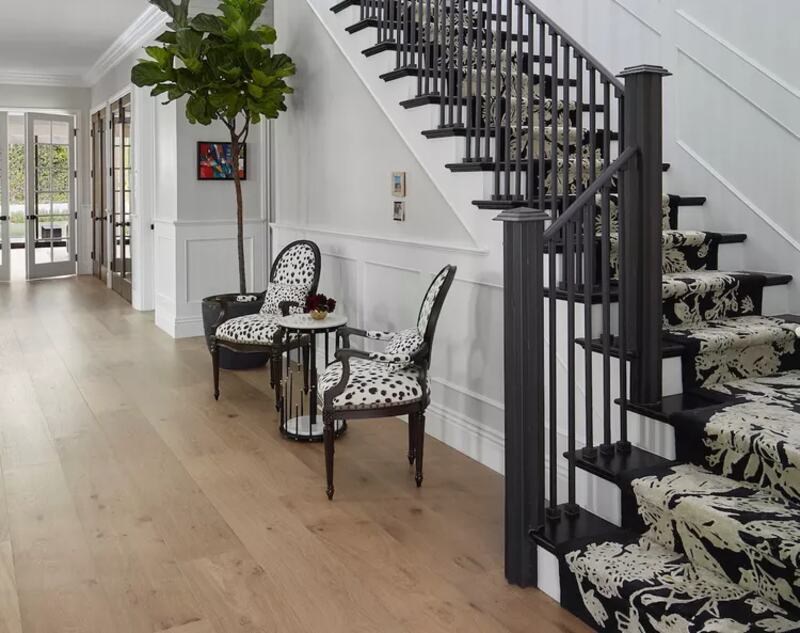I never thought much about the stairs in my house. They were just there—functional, basic, and a little dull. But everything changed the day my daughter slipped while running down them in socks. She wasn’t hurt badly, thankfully, but it was the wake-up call I needed. That’s when I began researching ways to make our stairs safer without sacrificing style. The answer? A stair runner.
At first, I didn’t even know what a stair runner was. A few internet searches and home improvement blogs later, I was intrigued. It turns out a stair runner is a long, narrow piece of carpet that runs down the center of a staircase. Unlike fully carpeted stairs, the edges remain visible, which adds a stylish contrast and a sense of structure. But beyond looks, it also adds grip and padding—perfect for a family with kids or pets.
A Home Problem Hiding in Plain Sight
Our staircase is the heart of our home. It connects the entryway to the upper floor, and it’s the first thing you see when you walk in. Yet, for years, I overlooked it. The wooden steps were cold underfoot in the winter and echoed loudly with every step. When guests came over, I often worried someone might trip or slip, especially on rainy days when shoes were wet.
The incident with my daughter made me realize how unsafe bare stairs could be. I also noticed scuff marks, scratches, and general wear that made the steps look tired. Suddenly, what used to be a non-issue became a priority. I wanted a solution that was practical but also added warmth and beauty to our space. That’s when I circled back to the idea of installing a stair runner.

The Search for the Right Stair Runner
Finding the right stair runner was like choosing a piece of art. There were so many options—patterns, textures, colors, and materials. I considered everything from classic stripes to intricate floral designs. In the end, I went with a simple herringbone pattern in a soft gray tone. It matched the rest of our decor and brought a modern, clean look to the stairs.
I also learned that the material matters. Wool runners are durable and naturally stain-resistant, but they can be pricey. Synthetic blends are more budget-friendly and still hold up well in busy homes. After some consideration, I chose a high-quality synthetic runner with a rubber backing for added grip.
Installation Day: More Than Just Carpet
I decided to have the stair runner professionally installed. While there are plenty of DIY tutorials online, I wanted the job done right. The installers arrived early and were finished in a few hours. Watching them work was fascinating—they measured each step, cut the runner to fit perfectly, and secured it tightly without damaging the wood.
When they were done, the difference was instant. The stairs looked warmer, more inviting, and elegant. More importantly, they felt safer underfoot. I could already tell the kids would be more stable walking up and down. No more slipping. No more worrying.
Aesthetic and Emotional Impact
I didn’t expect how much of a difference a stair runner would make, not just physically but emotionally. The house suddenly felt cozier. Every time I walk in and see that beautiful runner leading up the stairs, I smile. It adds personality and comfort without overwhelming the space.
Friends who visit always notice it. Some have even asked for referrals to get one installed in their own homes. My mother, who has arthritis, commented on how much easier the stairs were to use now that they had a soft surface with grip.
It’s amazing how a small design choice can completely change the atmosphere of a home. The stair runner became a conversation piece, a practical upgrade, and a source of joy.

Heading: Why Every Home Needs a Stair Runner
Beyond personal experience, the benefits of a stair runner are universal. First, there’s safety. Hardwood stairs can be slippery, especially for children, older adults, and pets. A stair runner adds friction, reducing the chance of slips and falls.
Second, there’s noise reduction. Without it, footsteps echo through the house, especially in multi-story homes. The runner muffles sounds, making your home quieter and more peaceful.
Third, it offers protection. Over time, foot traffic can wear down wood or painted stairs. A runner helps protect the finish from scratches and dents, which can be costly to repair.
Finally, there’s the design aspect. Whether you want to add a pop of color, create a sense of flow between floors, or highlight your home’s style, a stair runner gives you options. It’s a simple way to tie a space together.
conclusion
If you’re thinking about upgrading part of your home, don’t overlook your stairs. Adding a stair runner was one of the best decisions I’ve made—not just for how it looks, but for how it feels and functions. It turned a cold, echoing staircase into a soft, stylish, and safe part of our daily life.
What started as a response to a near-accident became a beautiful upgrade I never knew I needed. And that’s the magic of thoughtful home design: when practicality meets beauty, everyone wins.
So if your stairs are bare and your feet are cold, consider adding a stair runner. You might be surprised at how much warmth, charm, and peace of mind it brings into your life.





